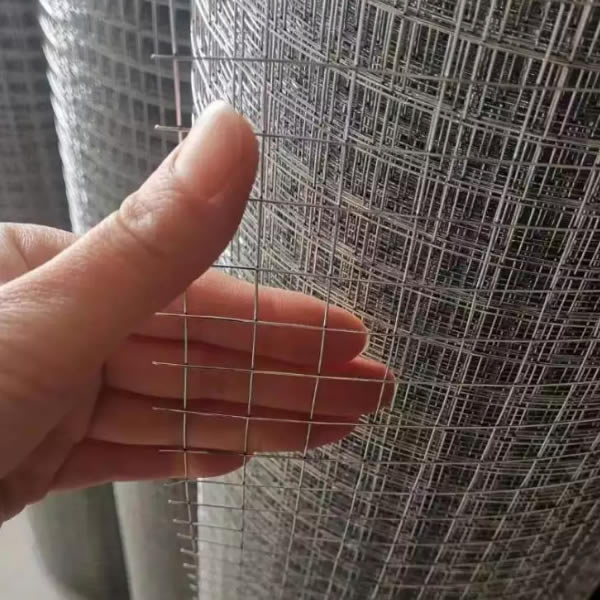Welded wire mesh plays a critical role in modern industries, construction, and manufacturing. It is widely used in bridges, highways, construction sites, and factories, demanding high stability, durability, and adaptability. However, the diverse materials used for welded wire mesh—each with unique physical properties—require careful selection based on application requirements. This article analyzes and compares the performance of four common materials: carbon steel, stainless steel, aluminum alloy, and copper.
Carbon Steel Welded Wire Mesh
Properties:
- Advantages:
- High strength and ductility, suitable for complex welding environments.
- Cost-effective, making it ideal for general industrial applications (e.g., fencing, concrete reinforcement).
- Disadvantages:
- Prone to oxidation and corrosion in high-temperature or humid environments.
- Limited lifespan in corrosive settings like coastal areas or chemical plants.
Applications:
- Temporary construction barriers, agricultural fencing, and low-cost infrastructure projects.
Enhancement Notes:
- Galvanized carbon steel variants (e.g., hot-dip galvanized) can improve corrosion resistance .
Stainless Steel Welded Wire Mesh
Properties:
- Advantages:
- Exceptional corrosion resistance due to chromium/nickel alloy content.
- High thermal stability (e.g., grades 304/316L withstand temperatures up to 800°C).
- Resistant to deformation and cracking during welding.
- Disadvantages:
- Higher initial cost compared to carbon steel.
Applications:
- Chemical processing, pharmaceutical equipment, food-grade filtration, and marine engineering.
Enhancement Notes:
- Grades like 316L are preferred for chlorine-rich environments (e.g., swimming pools, desalination plants) .
Aluminum Alloy Welded Wire Mesh
Properties:
- Advantages:
- Lightweight yet strong (strength-to-weight ratio exceeds steel in some cases).
- Natural corrosion resistance and excellent conductivity.
- Ideal for applications requiring easy handling and portability.
- Disadvantages:
- Requires specialized welding techniques (e.g., TIG welding) to prevent thermal cracking.
Applications:
- Architectural cladding, aerospace components, and automotive manufacturing.
Enhancement Notes:
- Anodized aluminum enhances surface hardness and color options for decorative uses .
Copper Welded Wire Mesh
Properties:
- Advantages:
- Superior electrical and thermal conductivity.
- High ductility and antimicrobial properties.
- Resistant to atmospheric corrosion.
- Disadvantages:
- High material cost limits widespread use.
Applications:
- Electrical shielding, RFI/EMI filtration, and specialized heat exchangers.
Enhancement Notes:
- Tin-plated copper variants improve solderability for electronics applications .
Comparative Summary
| Material | Strength | Corrosion Resistance | Cost | Key Applications |
|---|---|---|---|---|
| Carbon Steel | High | Low | Low | Construction, agriculture |
| Stainless Steel | High | Very High | Medium | Chemical, marine, food |
| Aluminum Alloy | Medium-High | High | Medium | Aerospace, architecture |
| Copper | Medium | High | High | Electronics, thermal systems |





